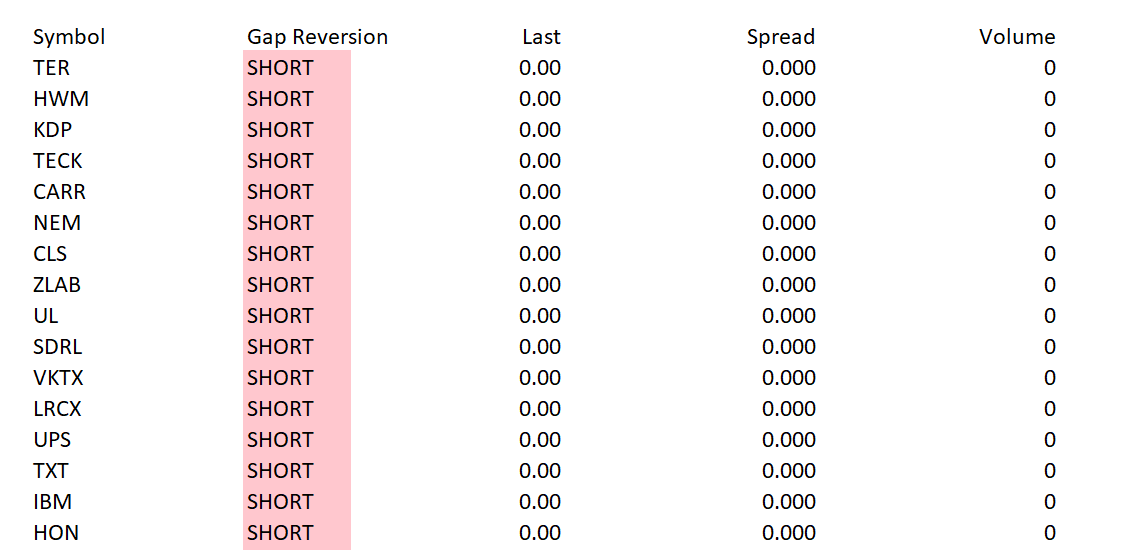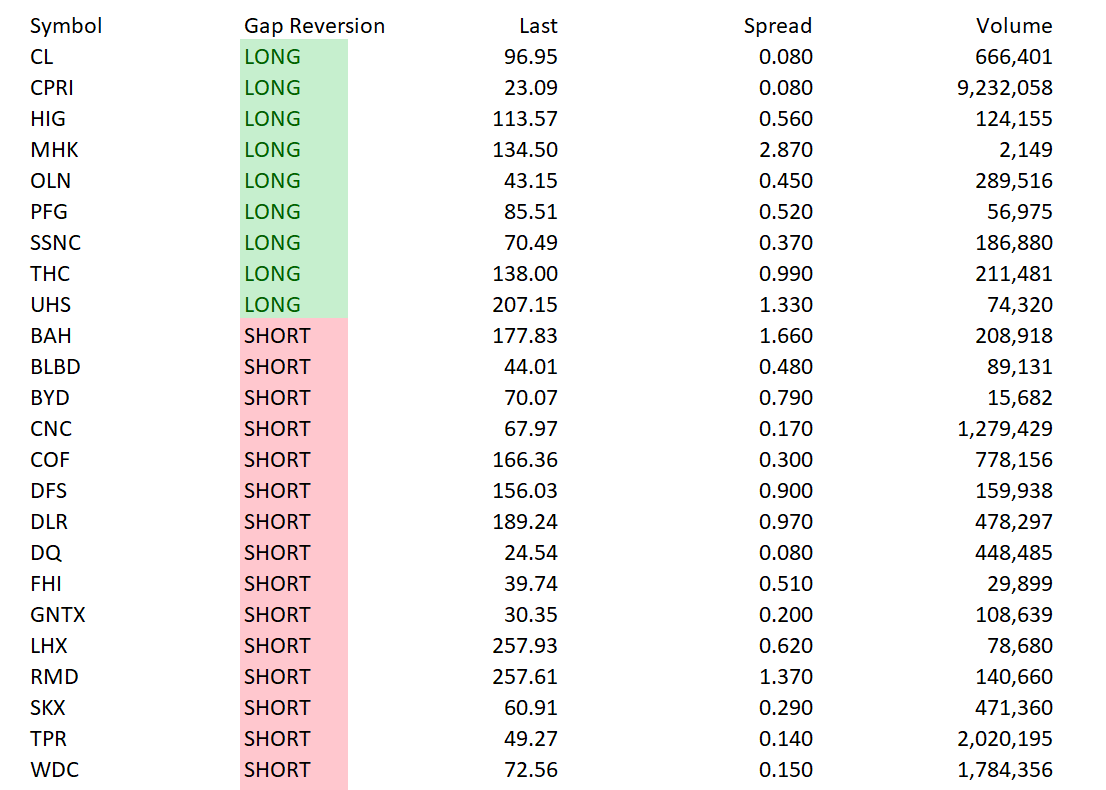The Small Cap Swing Trader Alert Archive
Below you'll find The Small Cap Swing Trader setups stacked up and ordered chronologically.Getting started in Day Trading – How Much Money Do I need?
Minimum capital for day trading
When starting day trading, one of the first questions new traders ask is, “How much money do I need to get started?” The answer depends on several factors, including the type of assets you want to trade, the market you’re trading in, and your personal goals and risk tolerance. Here’s a breakdown of what you need to know:
1. Understanding Regulatory Requirements
The minimum amount required for day trading in a margin account varies depending on the country and market. In the United States, for example, the Financial Industry Regulatory Authority (FINRA) sets specific minimums for day trading in stock markets:
- Pattern Day Trading Rule: FINRAs minimum capital for day trading is $25,000 in equity in your account if you plan to day trade frequently in a U.S. brokerage account. This applies if you execute four or more day trades within five business days (considering at least two of those trades on the same day).
- Margin Requirements: U.S. brokerage accounts typically require margin, meaning you can leverage your capital by borrowing. However, this means you need a minimum balance to cover potential losses.
If you plan on trading stocks outside the U.S. or trading other assets like forex or futures, these rules don’t always apply. Many forex and futures brokers have lower requirements, making these markets more accessible to traders with smaller budgets.
2. Trading Different Asset Classes
The amount of capital needed can vary widely by asset class:
- Stocks: As mentioned, U.S. stock day traders often need at least $25,000 to meet pattern day trader requirements. However, if you’re trading on a cash-only basis (without leverage), some brokers allow you to trade with smaller amounts, although you may be limited by trade frequency.
- Forex (Foreign Exchange): Forex trading requires less starting capital than stocks due to higher leverage ratios, often up to 50:1 or even 100:1 in some markets. Forex brokers typically let you start with as little as $500 to $1,000, though most traders prefer starting with $2,000 to $5,000 to weather market fluctuations.
- Futures: Futures brokers may require as little as $500 to open an account, though $1,000 to $5,000 is often recommended for active trading. Futures contracts can be very volatile, so a larger starting balance provides a cushion for trades that go against you.
3. Risk Management: A Key Consideration
Your risk tolerance plays a significant role in determining how much you need to start day trading. To manage risk, experienced traders often follow the “1% rule,” where they risk only 1% of their account balance on any single trade. For example, if you have $10,000 in your account, you would limit your loss on any one trade to $100.
Starting with a higher balance provides more flexibility and stability. Many traders recommend $30,000 to $50,000 for day trading stocks comfortably. This allows room for drawdowns and potential losses without triggering immediate concerns about account minimums or restrictions.
4. Consider Your Trading Goals
Consider your trading goals and whether you plan to make trading a full-time profession or a part-time endeavor. Larger accounts give you more freedom to trade multiple positions and withstand market fluctuations. For traders looking to generate income, having a starting capital of $50,000 to $100,000 provides the potential to achieve meaningful returns while managing risk effectively.
5. Fees, Costs, and Account Minimums
Remember that even though the minimum capital for day trading is $25,000, most brokers have account minimums, and you’ll need to account for transaction fees and commissions, even if they are minimal. Costs like these can add up over time, especially for day traders who trade frequently.
In Summary
To open a day trading account, the amount you need varies by asset type and market requirements:
- Stocks (U.S. markets): Minimum $25,000 (margin account for pattern day traders)
- Forex: $500 to $2,000 (although $5,000+ is recommended for flexibility)
- Futures: $500 to $1,000 minimum, with $5,000+ recommended
Starting with a larger account is always advisable if your budget allows it, as it provides the flexibility and cushion needed to manage risk and sustain trades through ups and downs. Day trading is high-risk, so consider your goals, test your strategies, and ensure you have the appropriate risk management measures in place before diving in.
October 24, 2024

October 25, 2024

Do I Need a Margin Account to Day Trade? Essential Guide for New Traders
One of the most common questions for new traders is whether a margin account is necessary to day trade. The answer? It depends on your trading goals, the type of account you have, and, importantly, the regulatory requirements set by the SEC.
What Is a Margin Account?
A margin account allows traders to borrow funds from their broker to increase their purchasing power. This ability to leverage enables traders to enter larger positions than they could with just their own capital. For day traders, margin accounts can offer significant advantages by allowing more trades with a potentially greater return on each.
Do You Need a Margin Account to Day Trade?
Technically, a margin account isn’t required to trade within a single day. You can day trade with a cash account, where you use only the funds available without any borrowed capital. However, there are some limitations if you choose to trade without margin, especially if you plan on trading actively.
Understanding the Pattern Day Trading Rule
If you decide to open a margin account and execute more than three day trades within five business days, the SEC’s Pattern Day Trading (PDT) rule applies. Under this rule, you must maintain a minimum balance of $25,000 in your account to continue day trading. This requirement does not apply to cash accounts, making them an alternative for traders who wish to avoid the PDT rule. However, cash accounts come with limitations on the number of trades based on cash settlement times, which can delay trade availability.
Pros and Cons of Day Trading Without a Margin Account
Pros of Trading Without Margin:
- Avoid the $25,000 minimum equity requirement of the PDT rule.
- Less risk due to trading only with your available cash, which can help prevent significant losses.
- No interest payments, as you’re not borrowing funds.
Cons of Trading Without Margin:
- Limited buying power, which can restrict potential gains.
- Delays in fund availability, as cash account trades must fully settle (typically in 2 business days).
- Limited to fewer trades if you’re actively trading daily.
Is a Margin Account Right for You?
Ultimately, whether you need a margin account depends on your trading style, capital, and risk tolerance. For traders who want flexibility and plan to day trade regularly, a margin account with a well-managed approach to leverage can be beneficial. But for those new to trading or looking to avoid strict PDT requirements, a cash account may be a safer, more straightforward choice.
Conclusion
A margin account isn’t essential to day trade, but it can provide advantages like increased purchasing power and flexibility. Understanding your goals and the regulations around day trading will help you choose the right account type for your trading journey.
By knowing these key differences, you can make an informed choice and align your account with your trading aspirations—whether that means leveraging margin or sticking with cash.
Good Trading,
Adrian Manz
How to Pick a Trading Computer
The Best Trading Computer
When it comes to day trading, having the right setup can significantly improve your performance. The ideal setup allows you to quickly analyze the market, execute trades with precision, and stay connected without lag or interruption. This guide covers the essential computer hardware and software to create a reliable, efficient, responsive day trading system.
1. Computer Hardware for Day Trading
A. Processor (CPU)
A powerful processor is at the heart of any trading computer. A fast and efficient processor is crucial since trading platforms and charting software can be CPU-intensive.
- Recommended Specs: Go for a multi-core processor, such as an Intel i7 or i9 or AMD Ryzen 7 or 9. Aim for at least four cores, but more is better, as it allows for multitasking.
- Why It Matters: A fast CPU enables quick data processing, reducing lag when running multiple charts and platforms simultaneously.
B. Memory (RAM)
RAM is where active processes and data are temporarily stored. For day trading, a significant amount of RAM is essential to handle charting software, browser windows, and other applications.
- Recommended Specs: 16 GB is a good starting point, but for more intensive setups, 32 GB or more can provide extra stability, especially if running multiple monitors or platforms.
- Why It Matters: Higher RAM helps avoid freezing or slowing down when running several applications at once, allowing you to switch seamlessly between charts and trading platforms.
C. Storage (SSD vs. HDD)
Day traders need quick access to data, so opting for a Solid State Drive (SSD) is ideal.
- Recommended Specs: A 512 GB or 1 TB SSD should be sufficient. An SSD offers faster boot times and rapid access to your software, data, and trading history.
- Why It Matters: SSDs quickly load software and large files, reducing wait times and enhancing responsiveness. This can be particularly useful when updating charts or executing trades.
D. Graphics Card (GPU)
While day trading doesn’t necessarily require a high-end GPU like gaming or video editing, a quality graphics card is essential if you plan to run multiple monitors or if your trading software has a graphics-intensive interface.
- Recommended Specs: Mid-range options like NVIDIA GTX 1660 or AMD Radeon RX 5700 are often sufficient. For a multi-monitor setup, ensure the card supports the number of monitors you plan to use.
- Why It Matters: A reliable GPU helps render multiple charts and data feeds smoothly across several screens without lag or graphical glitches.
E. Monitors
Day traders often use multiple monitors to view charts, news feeds, and trading platforms simultaneously. This enables quick access to information, improving decision-making speed.
- Recommended Specs: Three to four monitors are common in trading setups. Monitors with 24-27 inches of screen size and high resolution (1080p or higher) provide clear visuals without excessive eye strain.
- Why It Matters: More screen space allows you to monitor different stocks, charts, and news sources simultaneously, enhancing situational awareness and helping with timely trade execution.
Alienware computers have long represented a popular pick for traders, as little customization is required for maximum performance.
F. Network Connection and Backup
The best trading computer is useless without good internet. Internet stability is critical for day trading, as any interruption can lead to missed trading opportunities or losses.
- Recommended Specs: A high-speed fiber-optic internet connection is ideal. For added reliability, use a wired Ethernet connection rather than Wi-Fi. Additionally, a mobile hotspot or backup internet connection is recommended.
- Why It Matters: A reliable internet connection ensures you’re continuously connected to the market, reducing the risk of slippage or delayed orders due to connectivity issues.
G. UPS (Uninterruptible Power Supply)
Power outages can disrupt trading and cause significant losses. A UPS provides a short-term power supply, allowing you to close trades or save work during an outage.
- Why It Matters: A UPS gives you time to secure positions and shut down your system properly, protecting your trading data and preventing unintended losses.
2. Software for Day Trading
Choosing the right software is just as important as having the right hardware. From charting tools to trading platforms, each software plays a unique role in making your trading process smooth and efficient.
A. Trading Platform
A trading platform is your primary tool for executing trades, analyzing price movements, and managing orders. Choose a platform that’s reliable, fast, and offers real-time data.
- Popular Platforms: RealTick (EZE), TradeStation, Thinkorswim by TD Ameritrade, Interactive Brokers’ Trader Workstation, and NinjaTrader are popular platforms with advanced charting and analytical tools.
- Why It Matters: The right platform should be user-friendly, offer direct market access, and have customizable features tailored to your trading style. Ensure it integrates well with your broker and has low latency for fast execution.
B. Charting Software
Charting software helps you analyze price patterns, technical indicators, and trends. Most trading platforms have built-in charting tools, but advanced traders may prefer standalone software with specialized features.
- Popular Software: TradingView, MetaTrader, and TrendSpider are widely used. These offer customizable indicators, drawing tools, and pattern recognition.
- Why It Matters: Quality charting software improves your analysis and helps you make informed trading decisions. Look for software that provides real-time data, multi-timeframe analysis, and robust drawing tools.
C. News Feed Services
Day traders rely on timely news updates to stay informed about market-moving events. A news feed service provides real-time access to relevant financial news.
- Popular Services: Benzinga Pro, Bloomberg Terminal, and MetaStock offer fast, reliable financial news services.
- Why It Matters: Real-time news services help traders act on breaking news, earnings announcements, or economic events that can impact stock prices. Faster news can lead to quicker, more profitable trades.
D. Economic Calendar
An economic calendar lists scheduled announcements like interest rate decisions, GDP reports, and employment data that can affect market volatility.
- Popular Sources: Investing.com, Forex Factory, and the Economic Calendar on TradingView.
- Why It Matters: Knowing when economic events are scheduled allows traders to plan around potential volatility spikes, reducing the chance of unexpected market reactions.
E. Trading Journal Software
Keeping a trading journal is essential for tracking your trades and analyzing performance. Journals help traders identify strengths and weaknesses, improving overall strategy.
- Popular Options: Tradervue, Edgewonk, and Journalytix offer detailed trade tracking, analytics, and performance metrics.
- Why It Matters: A trading journal enables you to review your decisions, refine strategies, and ultimately become a more disciplined trader. Look for software that tracks key metrics and supports importing data from your trading platform.
3. Additional Considerations for a Day Trading Setup
A. Ergonomics
Since traders spend extended periods at their desks, ergonomic considerations like a comfortable chair, adjustable desk, and monitor stands can help prevent physical strain and improve focus.
B. Backup System
Keep a secondary device, like a laptop or tablet, loaded with your trading software. This can serve as a backup in case your primary system fails or if you need to trade while away from your desk.
C. Security Software
Trading involves sensitive financial data. Invest in antivirus software, firewalls, and virtual private networks (VPNs) to keep your information secure and protect against cyber threats.
Final Thoughts
The right computer hardware and software setup can significantly enhance your day trading experience. Investing in a powerful computer, reliable software, and stable internet connection can make the difference between executing trades smoothly and encountering frustrating delays or system failures. Remember that while the best hardware and software can improve performance, your skill, discipline, and strategy ultimately determine your success in day trading.
Good Trading,
Adrian Manz
Click here for more articles by Adrian and Julie Manz.
October 15, 2024



